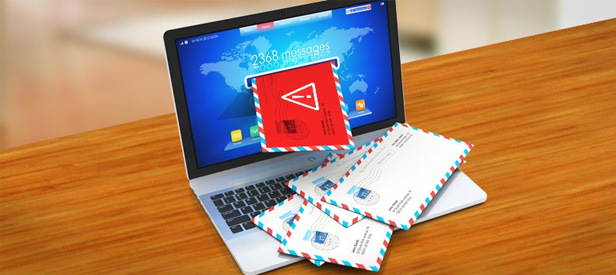Stay Safe From Unwanted Malicious Emails

21 Apr 2016
Stay Safe From Unwanted Malicious Emails
Stay Safe From Email Viruses
Hackers, now a days, are continuously trying to find loopholes to get into the victim’s computers. One such new technique is sending malicious emails and injecting ransomwares in victim’s computers.
But What Is A RansomWare?
Ransomware is a type of malware that restricts access to the infected computer system in some way, and demands that the user pay a ransom to the malware operators to remove the restriction. For instance, your file may get locked with some 256 Bit encryption, and can only be decrypted by the key provided by hackers.
The victims usually get emails from unsolicited email accounts containing attachments. The subject lines of such emails are usually very cheesy or tempting users to open the attachments. For example:
1- We have a huge order for your products in attachment.
2- Find the top professional opportunities in your area in attachment.
3- Congratulations, you have won USD 1 Million. Don’t miss the opportunity.
When the user extracts and opens the files in the email, it actually injects ransomware and Voila! you are now a victim.
What are the file types that inject ransomware?
These files can be in any format, like word, exe, excel, image, javascript or zip etc. The files usually when opened have following type of content in it.
Well, Where Is Antivirus Then?
Most of these files are like normal files and usually they get away from antiviruses. The best antiviruses, eset, avast, f-prot, micro trends, microsoft security essentials and many more usually catch and disinfect these attachments. However, there are still wide number of attachments that are not quarantined or disinfected.
How To Stay Safe From Such Emails?
- Backup regularly and keep a recent backup copy off-site. There are dozens of ways other than ransomware that files can suddenly vanish, such as fire, flood, theft, a dropped laptop or even an accidental delete. Encrypt your backup and you won’t have to worry about the backup device falling into the wrong hands.
- Don’t enable macros in document attachments received via email. Microsoft deliberately turned off auto-execution of macros by default many years ago as a security measure. A lot of malware infections rely on persuading you to turn macros back on, so don’t do it!
- Be cautious about unsolicited attachments. The crooks are relying on the dilemma that you shouldn’t open a document until you are sure it’s one you want, but you can’t tell if it’s one you want until you open it. If in doubt, leave it out.
- Don’t give yourself more login power than you need. Most importantly, don’t stay logged in as an administrator any longer than is strictly necessary, and avoid browsing, opening documents or other “regular work” activities while you have administrator rights.
- Consider installing the Microsoft Office viewers. These viewer applications let you see what documents look like without opening them in Word or Excel itself. In particular, the viewer software doesn’t support macros at all, so you can’t enable macros by mistake!
- Patch early, patch often. Malware that doesn’t come in via document macros often relies on security bugs in popular applications, including Office, your browser, Flash and more. The sooner you patch, the fewer open holes remain for the crooks to exploit.

